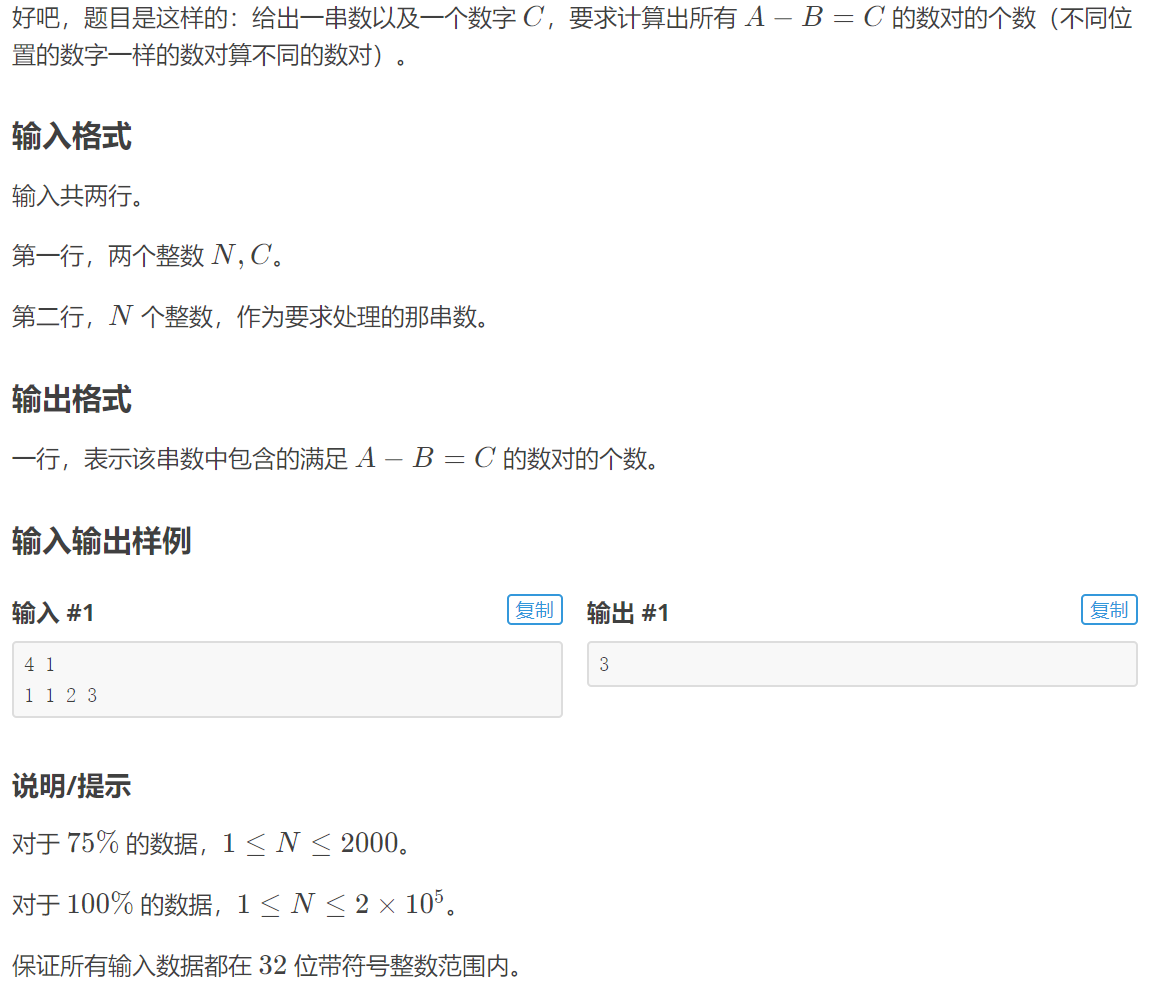
思路: 枚举B,对于每个B检查B+C(即)A的个数,将这个数直接加到答案上.
于是想到开个桶,但是数据是32位带符号整数范围.即使是int也只能开到107.
直接看答案吧.
#include <algorithm> #include <cstdio> #include <cstring> #include <iostream> using namespace std; int n, c; long long s[200010], ans; int main(){ cin >> n >> c; for(int i = 0; i < n; i++) cin >> s[i]; sort(s, s + n); // s调整为升序排列 for(int i = 0; i < n; i++) ans += (upper_bound(s, s + n, s[i] + c) - s) - (lower_bound(s, s + n, s[i] + c) - s); cout << ans << endl; return 0; }
upper_bound返回满足s[x]>=s[i]+c的最小位置(指针),lower_bound返回满足s[x]>s[i]+c的最小位置.他们的复杂度是O(nlogn).
这两个位置的差就是"A的个数".